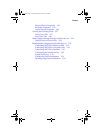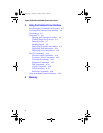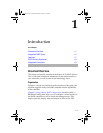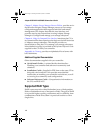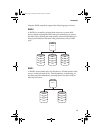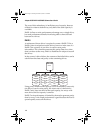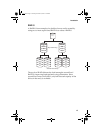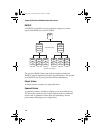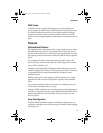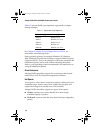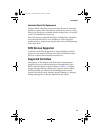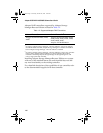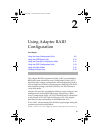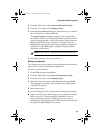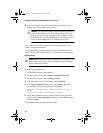
1-7
Introduction
RAID Volume
A RAID volume is created by joining two or more single-level
arrays of the same RAID type. Unlike dual-level arrays, the arrays
in a RAID volume do not have to be of equal capacity. In direct
contrast to dual-level arrays, the second-level arrays in a RAID
volume are not striped together, instead they are connected end-to-
end.
Features
Optimized Disk Utilization
For simplicity the explanations of the various types of array above
describe the arrays in terms of complete drives. Typically arrays
use the same size drives, or if drives of varying capacities are used,
the capacity used on each drive is limited to that of lowest capacity
drive.
For example, a RAID-1 constructed using one 18G and one 9G
drive will only use half of the capacity of the larger drive and the
array will be limited to 9G.
Adaptec’s Optimized Disk Utilization feature allows arrays to be
created using portion of drives. These sections of drives are known
as segments and are created automatically during the array
creation process.
Within a given array each segment will be the same size, but the
segment size does not have to equal the capacity of the smallest
drive.
Any unused capacity on drives is known as available space, and
can be used in another array or arrays.
Adaptec RAID controllers use a small segment at the beginning of
each drive connected to them to store information about the drives
and arrays attached to the controller. This area is known as the
RAID signature.
Array Reconfiguration
Adaptec RAID controllers support modifying existing arrays by
expansion, migration from one array type to another and changing
the stripe size.
UG.book Page 7 Saturday, October 26, 2002 12:08 PM



